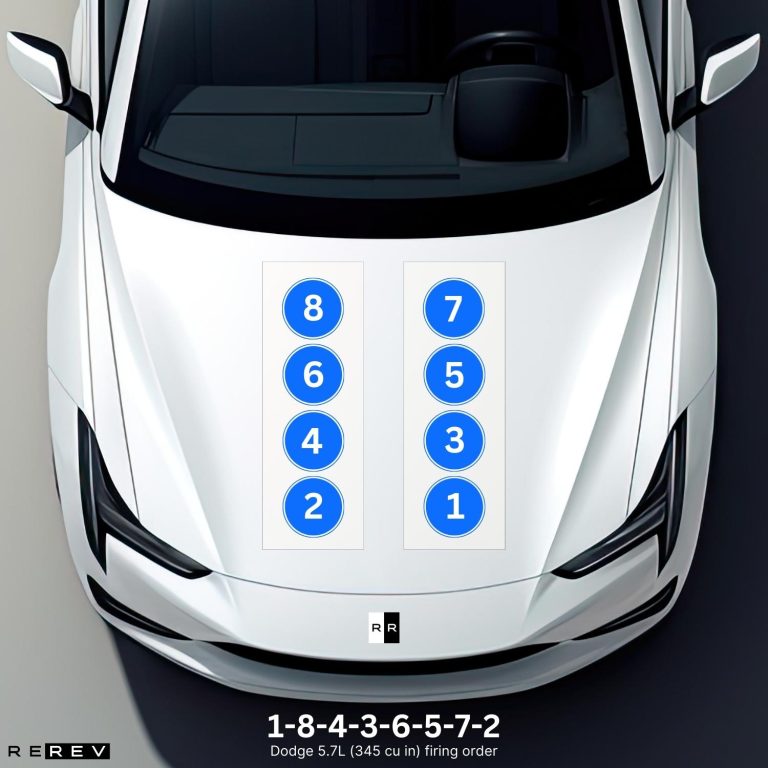Dodge 5.7L (345 cu in) firing order — diagram & guide
Unravel the intricacies that make up the Dodge 5.7L firing order.

If you own a Dodge vehicle with the famous 5.7-liter HEMI engine, we are certain that you are enjoying the power and thrill. The only thing that could affect your driving pleasure in this case is a common misfire issue, which is why you may need the precise Dodge 5.7L (345 cu in) firing order.
For such cases, our team of automotive experts will get you through the drill and explain the exact sequence in which the cylinders are firing. We’ll also focus on some related key points including the cylinder arrangement, so let’s get into it.
Dodge 5.7L firing order
To give you a straight-up answer – the Dodge 5.7L (345 cu in) firing order is 1-8-4-3-6-5-7-2 and this order is the same when the cylinder deactivation system is active. So, your Dodge vehicle with the 5.7-liter HEMI V8 always fires in the same sequence.
While that’s the simpler side, it’s a bit more difficult to explain why the order is like this when the cylinder positions are pretty unrelated to this. However, each cylinder’s spark plug wire is plugged into the distributor differently, and the clockwise rotation of the distribution gives you the firing order.
So, you’ll also want to know the cylinder positions so you can combine them with the firing order and properly check each cylinder for oil residue or the need to change coil packs.
Dodge 5.7L cylinder diagram

This engine comes with two sets of cylinder banks, each of them containing four cylinders per bank. So, you’ll find the cylinders 1, 3, 5, and 7 on the driver’s side, and the cylinders 2, 4, 6, and 8 on the passenger’s side.
If the cylinder deactivation system is on, cylinders 1, 4, 6, and 7 will get deactivated, but that doesn’t change the firing order in any way except for these cylinders not adding up to the power output at that moment.
There’s a difference in positioning between the first cylinders in both banks (cylinders 1 and 2) since the first cylinder on the driver’s side goes a bit further towards the radiator.
Dodge 5.7L vehicle applications
Back in 2003 when this engine was introduced, it was only used for the Dodge RAM truck. However, it later got featured in R/T versions of various other Dodge models, so here’s a complete list:
- Dodge RAM
- Dodge Durango
- Dodge Magnum R/T
- Dodge Challenger R/T
It was also very popular as a naturally-aspirated version of the Challenger, and it also got featured in vehicles like Chrysler Aspen, Jeep Wagoneer, Chrysler 300C, and Jeep Commander.
Our take
Well, that settles it for our guide on the Dodge 5.7L 345 cu in firing order. We hope that our guide can help you fix the misfiring issues of your engine and ensure it runs smoothly for years to come.
Regardless of the age of your car, the 5.7-liter HEMI engine always has the same firing order, so that makes it easy to fix minor issues along with the cylinder position diagram.